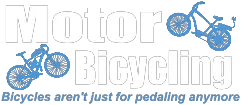rdrunner2010,
Welcome to you and your dad. You've come to the right place for help. Let's take them one at a time:
1. Clutch: The clutch arm on the engine by way of a cam pushes in on a steel pin and ball bearing that applies pressure against the spring which puts pressure against the clutch pads, or pucks, as some call them. When the spring is depressed the clutch is what we call, disengaged. It is like pushing the clutch pedal down on a standard transmission car. The sprocket will always rotate when the rear wheel turns but with the clutch disengaged it is disconnected from the engine crankshaft. To properly install the cable you'll want to have just a very little bit of free play in that arm with the cable connected and the handlebar lever un touched, or not squeezed. About 1/8th inch or less of play is good. When you squeeze the lever that arm should move inward, toward the motor about an inch. That should get you in the ball park as far as getting the clutch to work. A little adjustment afterwards might be necessary due to the cable stretching.
Chain: When you shorten a roller chain, that's the proper name for the type of chain we're dealing with, you'll have to remove two links, not just one. There is a male and female end, or as you said, a receiving hole and a pin. To get the master link to work you'll need two holes.
Chain tensioner: The Kit supplied plastic or nylon wheels can be noisy but the engine, clutch and chain will make more noise than the tensioner wheel. The trick to getting the tensioner to work correctly is to bend, or twist the bracket so the centerline of the wheel aligns with the path of the chain. Most kit brackets do not allow the wheel to run in line with the chain and tend to pull the chain to one side or the other without bending or twisting the bracket before final installation. Many of us who have been around the block a few times secure the bracket to the frame with a small bolt and nut through a hole drilled completely through the bracket and bike frame. That will assure the bracket will not loosen and rotate into your rear wheel/spokes, which can be a dangerous and expensive event. If we can be of further assistance please feel free to post your questions. We'll do our best to get you on the road quickly and safely.
Tom






